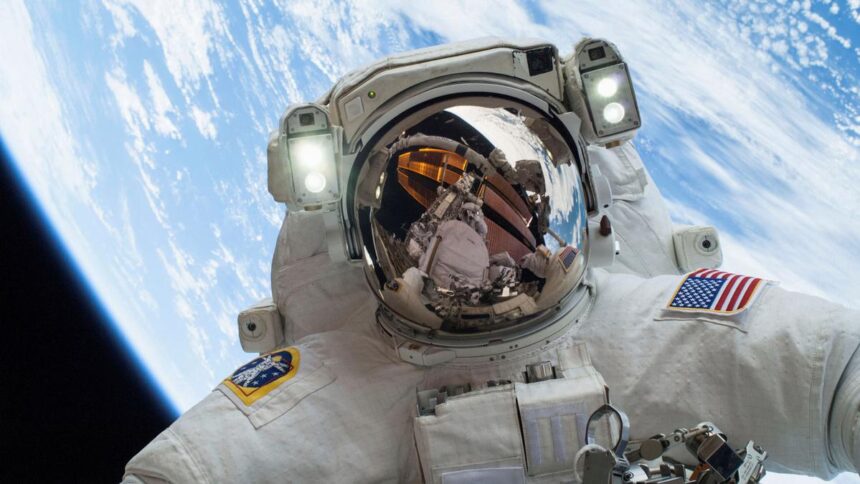Voyager 1: The Farthest Human-made Spacecraft
In February, Voyager 1, the farthest human-made spacecraft from Earth, was 25 billion kilometers away. This achievement marks the pinnacle of human space exploration. Scientists hope that in the future, a human astronaut will reach Voyager 1’s distant location, a journey that could take several years of spaceflight.
One of the critical factors for astronauts’ well-being during such long journeys is thermoregulation: their body’s ability to maintain a stable internal temperature. In the unique microgravity environment of space, this process faces significant challenges.
IIST Study Reveals Microgravity’s Impact on Thermoregulation
Researchers at the Indian Institute of Space Science and Technology (IIST) in Thiruvananthapuram have published a study indicating that "microgravity consistently increases core body temperature, with fluid shifts playing a crucial role in thermal balance," according to Shine S.R., a professor of aerospace engineering at IIST and an author of the study.
Human bodies respond differently to temperature changes based on age, fitness level, and body fat. In near-zero gravity environments like space, the human body undergoes significant changes, affecting bones, muscles, the heart, the immune system, metabolism, and even individual cells. Some of these changes can be severe, so space agencies and astronauts continuously monitor the spacefarer’s body temperature.
3D Computational Model for Thermoregulation
Scientists using a computer model to evaluate the body’s ability to regulate temperature in specific conditions must also account for "physiological changes observed in space, including blood shifts, metabolic variations, muscle atrophy, and environmental influences."
Shine’s team has developed a 3D computational model of human thermoregulation that "incorporates these changes to simulate the effects of microgravity on thermoregulation, including blood redistribution, reduced blood volume, changes in metabolism, and alterations in bone and muscle mass."
Validation of the Model
According to Chithramol M.K., PhD student at IIST and first author of the study, the team’s studies were limited by sufficient and accessible data on metabolic changes. In situations where data was unavailable, they tested how different factors changed their results and used their "best judgment and standard engineering practices" to assess their impact.
The model uses mathematical equations to track how heat moves through the body in three dimensions, and accounts for mechanisms like sweating and shivering, the impact of clothing, heat generated by vital organs, and other factors that influence how a body regulates its temperature.
Each factor is modeled separately and then combined to understand the overall impact of microgravity on thermoregulation.
Published Findings
The team published its findings in "Life Sciences in Space Research" on March 29. Their research revealed that the redistribution of blood from the lower limbs to the upper body in microgravity environments significantly impacts the body’s temperature distribution. Specifically, the researchers reported that while the feet and hands become cooler as the body spends more time in microgravity, the head, abdomen, and the core get warmer.
The model also indicated that when astronauts exercise in space, their body temperature rises faster than it does on Earth. Over 2.5 months in microgravity, considering 30% lower sweating and 36% higher metabolism, the core body temperature may increase to around 37.8°C from 36.3°C before flight. If one were exercising in the same conditions, the temperature would be closer to 40°C.
Real-world Applications
The researchers were able to confirm their model’s ability to predict real outcomes by using it to simulate astronauts’ body temperature onboard the USSR’s and Russia’s erstwhile Mir space station and onboard the International Space Station, then comparing its output to official reports. They matched.
Most current models that predict how bodies regulate temperature mostly use data from non-Indian populations. Different body types and physiological processes modulate thermoregulation differently; a model specific to one population group may fail to predict specific outcomes when applied to another group.
As thermoregulation models indicate how a person responds to temperature changes, they are also used in many everyday situations. For example, clothiers use such models to fine-tune how their products keep people warm or cool. Architects use such models to design buildings to lower heat stress of their occupants. In medicine, especially during heart surgeries, thermoregulation models predict how a patient’s body temperature changes, helping both doctors and patients avoid complications.
Conclusion
According to the IIST team, these models calculate the universal thermal climate index — a number that indicates how hot or cold it feels outside by considering factors like wind, humidity, and sunlight.
Shine said, "These models are valuable tools for enhancing safety, comfort, and performance in diverse real-world scenarios" in addition to astronaut health and safety in microgravity environments. "Take our model, for example: while [it] was developed with the human space program in mind, we have also realised its potential in various everyday situations on earth."
Author
Shreejaya Karantha is a freelance science writer.
Reference : https://www.thehindu.com/sci-tech/science/microgravity-increases-core-body-temperature-iist-model/article69501348.ece








